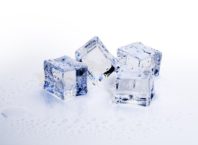As per Ayurveda, health does not mean only a disease-free state of being. It means a balance of the three doshas, Vata, Pitta, and Kapha, representing the nervous, metabolic, and nutritional systems.
A disease occurs when the balance between the three doshas is interrupted. An Ayurvedic cleanse, the Panchakarma, meaning five actions or procedures, pulls out the toxins from the body and balances the three doshas.
An ideal Panchakarma treatment is fourteen days long. Out of these days, six days are spent in preparation, one day is for the purge or elimination, and the rest seven days are kept for the restoration process.
Contents
The Procedure Panchakarma Cleanse
A successful Panchakarma Ayurvedic treatment is performed under the supervision of highly experienced practitioners. It consists of three steps.
1Poorva Karma
It’s a preparatory process before the primary treatment. It softens the tissues so that the lipid-soluble toxins deposited get liquified and go into the digestive tract. From the tract, they get effectively removed. It consists of three procedures.
- Pachan karma enhances digestion, so the individual can digest clarified butter, which is given for liquifying the fat-soluble toxins.
- Snehan karma – In it, medicated clarified butter is provided to the individuals in greater doses for liquifying the fat-soluble toxins that are settled in the deep tissues.
- Swedan karma – In it, the patient undergoes a steam bath, which opens up the body channels and permits the heat to liquefy toxins even more.
2Pradhan Karma
It is a significant stage of Panchakarma therapy. It has the following phases.
- Vamana means induced vomiting that clears the upper gastrointestinal tract to the end of the stomach.
- Virechanam is induced purgation that clears the gastrointestinal tract from the end of the stomach to the exit.
- Anuvasana – In it, the oil enema lubricates the rectal part and takes away the lipid-soluble waste via the anus.
- Rakta Moksha – It entails removing stagnated blood through tools like leeches.
- Nasyam entails nasal inhalation of medicinal substances that cleanse the respiratory tract.
3Paschat Karma
It is an after-therapy dietary routine to recover the absorptive and digestive ability of the body to its usual state. It consists of three procedures.
- Samsarjana Karma – It is the food therapy post detoxification that slowly increases the diet of an individual from liquids to semi-solid and finally to a normal diet.
- Rasayan Adi Prayogam – It’s a therapeutic rasayan therapy that enhances natural immunity and overall well-being.
- Shaman chikitsa refers to a pacification therapy that uses herbs and lifestyle modifications.
Who Requires the Panchakarma Cleanse
Anyone can reap the benefits of a Panchakarma procedure. It’s because the human body is consistently making toxins. So it is imperative to detox it regularly.
Suitable Panchakarma treatment is more than just an Ayurvedic therapy. It’s a holistic living experience amid nature and the Ayurvedic best practices. However, if you observe the following signs, it means you should consider this cleanse and detox your body.
- A thick coating on your tongue.
- A constant feeling of exhaustion, particularly after consuming meals.
- Aches and pains in the body.
- Excessive cravings that you cannot control.
- An unclear mind.
- Foul breath and body odor.
- Constipation
The significant purpose of this Ayurvedic treatment is shodhana or purification. If you treat a disease with this approach, it doesn’t appear again.
Thus, this Ayurvedic treatment is the perfect way to heal, recover, and rebalance your entire body. Ensure that you undergo this treatment only under the guidance of a qualified Ayurvedic practitioner.













